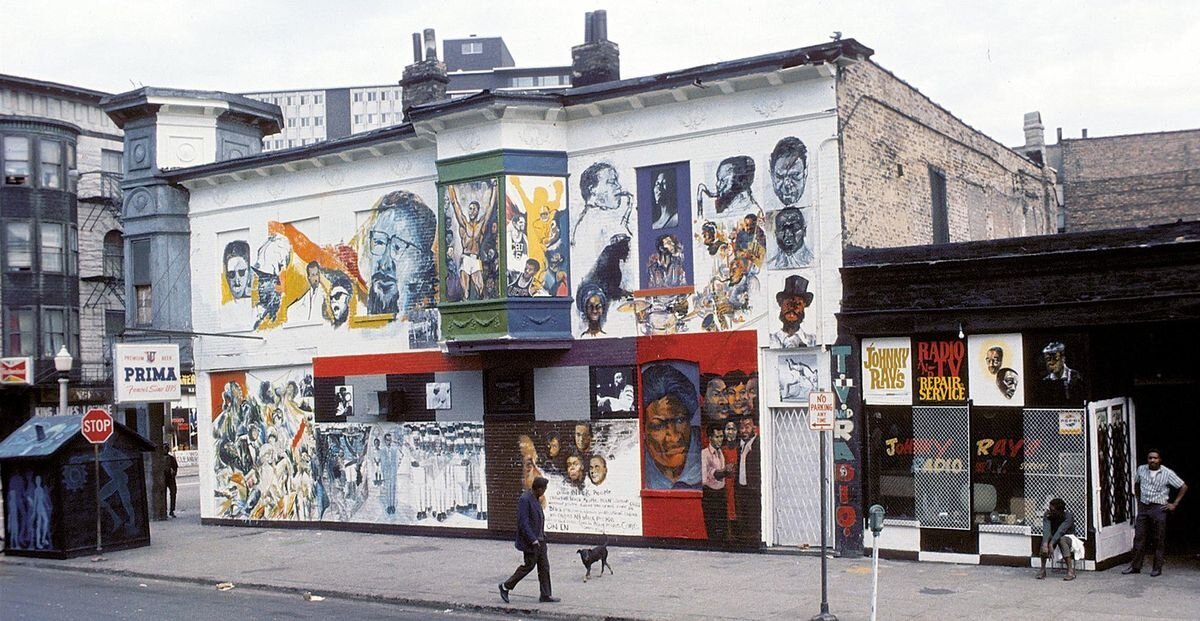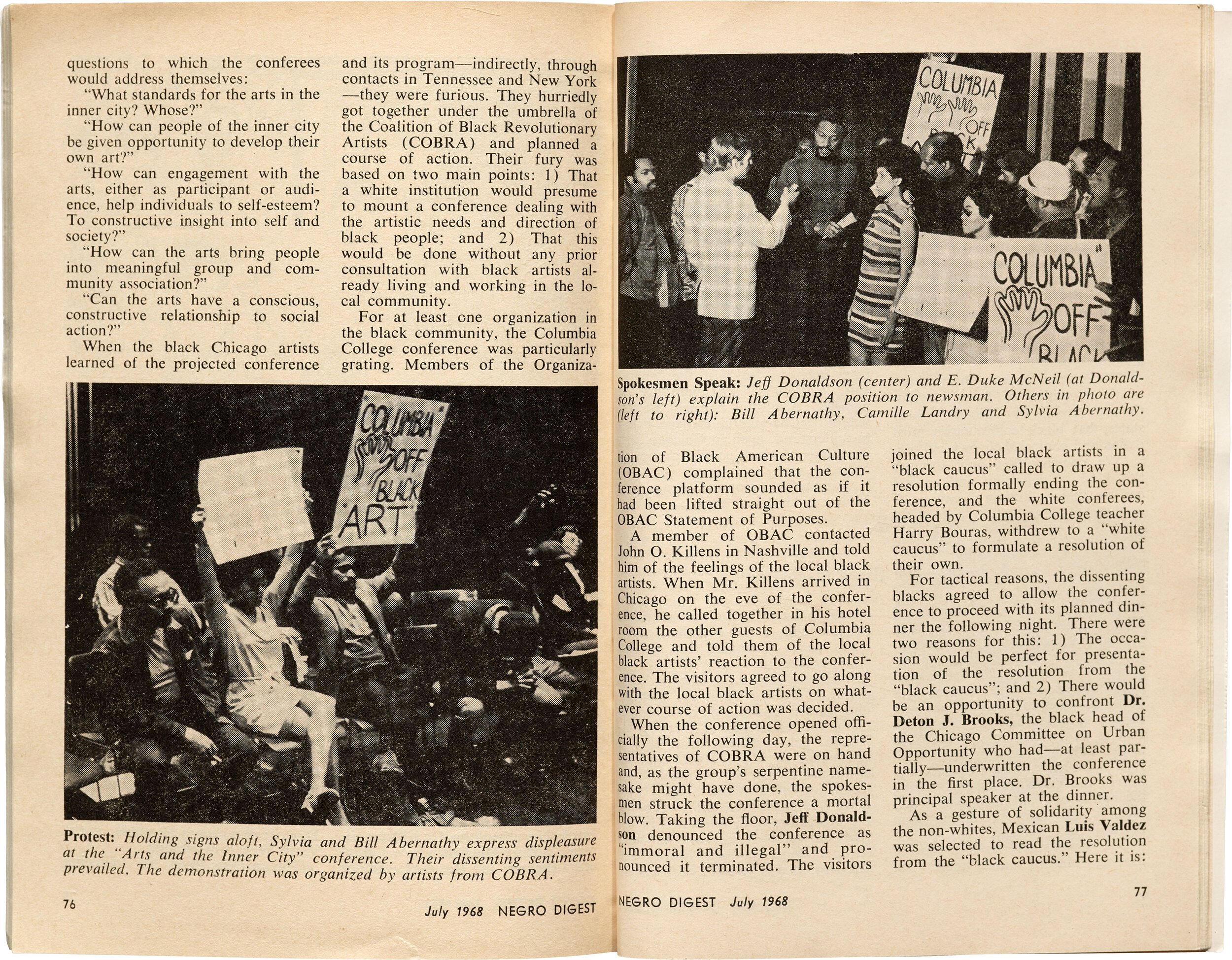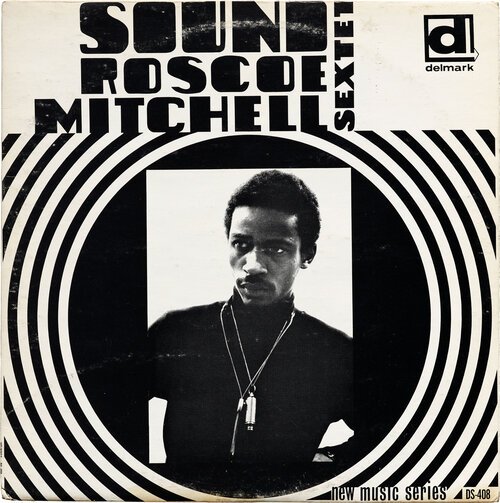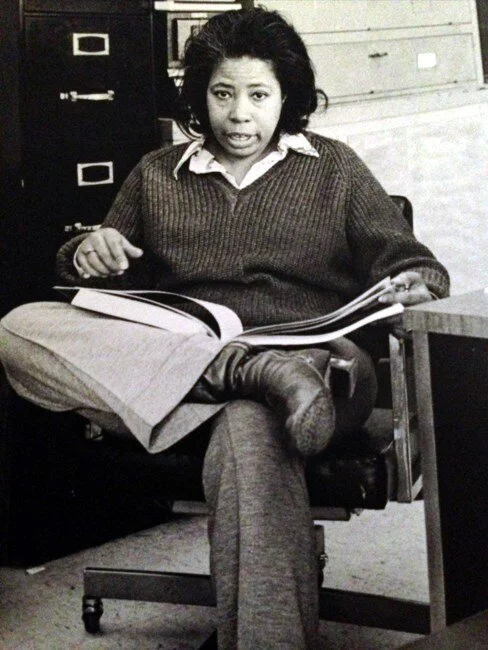Laini + Cheryl D. Miller + Dorothy Hayes
Wall of Respect. Image by Robert Abbott Sengstacke, a Black photojournalist during the Civil Rights Movement for Chicago Defender.
We are starting a new series exploring Black creative history heavily focused on art + design entitled: Black Creatives to Know. Check-in each month to learn about designers + artists who have shaped, inspired, and propelled our own creative thinking. In order to decolonize design, we need to share the works of Black designers who are so often overlooked, underrepresented and left out of art and design books and classes. If it weren’t for these fore-creatives we wouldn’t be able to do what we do, running this little New Orleans studio.
This month we’ll explore the work of Laini (Sylvia Abernathy), Cheryl D. Miller, and Dorothy E. Hayes.
Laini (Sylvia Abernathy)
Laini is pictured protesting with OBAC a conference at Columbia College of Chicago.
Thanks to an Ethel’s Club member we discovered the work of Laini (Sylvia Abernathy) via the Design Freaks podcast. Note: If you identify as BIPOC looking to find a creative, inclusive community, we highly recommend joining Ethel’s Club digital platform.
Laini (Sylvia Abernathy), a Chicago-based activist, student and graphic designer created dynamic album covers in the 1960’s. She is best known for her collaborative work, Wall of Respect, a community mural in South Side Chicago. Alongside the Visual Arts Workshop of Organization of Black American Culture (OBAC) and fourteen artists, they painted a montage of portraits of Black heroes and heroines including - Nat Turner, Gwendolyn Brooks, Aretha Franklin, Marcus Garvey, and Harriet Tubman to name a few. The mural was created for the people, a core belief of the Black Arts Movement. Unfortunately in 1971, a fire destroyed the building the mural was housed.
At the same time, Laini was designing jazz album covers for Delmark Records. It is believed she was the first Black woman to be credited as an album cover designer. Laini had the ability to translate the music into unique visuals and illustrate her perspectives of Black life. Her graphic design work wove in high contrast with bold text and colors that set it apart from other album covers. Unfortunately, her work has not been studied or researched because white men’s work was represented in the forefront of jazz album design. Her work is also deeply tied to her photographer husband’s work with whom she collaborated with which minimized her own extraordinary craft and identity.
You can read more about Laini’s contributions to design here.
Cheryl D. Miller
Cheryl D. Miller in the 1980’s.
Cheryl D. Miller is a visionary and outspoken advocate for Black designers and gender disparity in the industry. In 1987 she wrote, “Black Designers: Missing in Action,” for Print magazine as an addition to her Pratt Institute Master’s thesis about the abysmally low number of Black people recognized as design professionals. Miller believes BIPOC designers have the ability to design for the mainstream environment and their own people - something she believes white designers can’t do.
Propelled by her high school teacher’s disapproval of her creative aptitude, Miller applied to art schools and was accepted at Rhode Island School of Design. Upon her father’s passing, she transferred to Maryland Institute College of Art to continue her education. After graduation, much of her work was focused on government agencies, associations, and teaching. Later she launched the art department at WHMM-TV/32-PBS, Howard University’s new station. Miller received her graduate degree in Communications Design at Pratt Institute School of Art.
Design by Cheryl D. Miller: “Defying Odds, Expanding Opportunities: The African American Challenge,” Congressional Black Caucus Foundation 21st Annual Legislative Weekend program, September 1991
In 1987, Miller established Cheryl Miller Design Inc., one of a handful of Black women-owned design firms in New York. The firm created logos for corporations and non-profits in the Mid-Atlantic, Washington D.C. area. While working with corporate clients, Miller pitched to create in-kind projects benefitting Black organizations, which she defined as Civil Rights design work.
Today, Miller continues to fight for Black designers stating her 1987 Print article is still more relevant than ever. Currently, she's documented her Civil Rights designs and they are archived at Stanford University.
Dorothy E. Hayes
Professor Dorothy E. Hayes
Dorothy E. Hayes spent her life and career invested in helping advance Black creatives and designers in a white-male dominated industry. She is best known for organizing “Black Artists in Graphic Communication” alongside Joyce Hopkins. This 1970 exhibition featured 49 young Black graphic designers. As a young designer, Hayes vowed to be a mentor to any Black creative who came to her for advice or information about the industry.
A quote by Hayes from a 1968 Print Magazine Article “Black Experience in Graphic Design”
I don’t think that I have ever experienced more discouragement and suppression of Black artists in art. Instructors treat the Black students as though we were some out-and-out freak and a tremendous threat to the instructor, when all the student is trying to do is develop talent.
Hayes was born in Mobile Alabama. In 1957, full of confidence and drive she left for New York City to study graphic arts at Cooper Union School of Art and the New York Institute of Advertising. Her career began at a well-known broadcasting company where she was not allowed to work in any creative position. She was told her employment was simply a form of tokenism. Hayes later opened her own commercial art and design company - Dorothy’s Door which provided services for clients such as CBS Radio and AT&T. She also taught design at New York City College of Technology.
Let us continue to uphold and acknowledge these creatives as we decolonize art + design.







